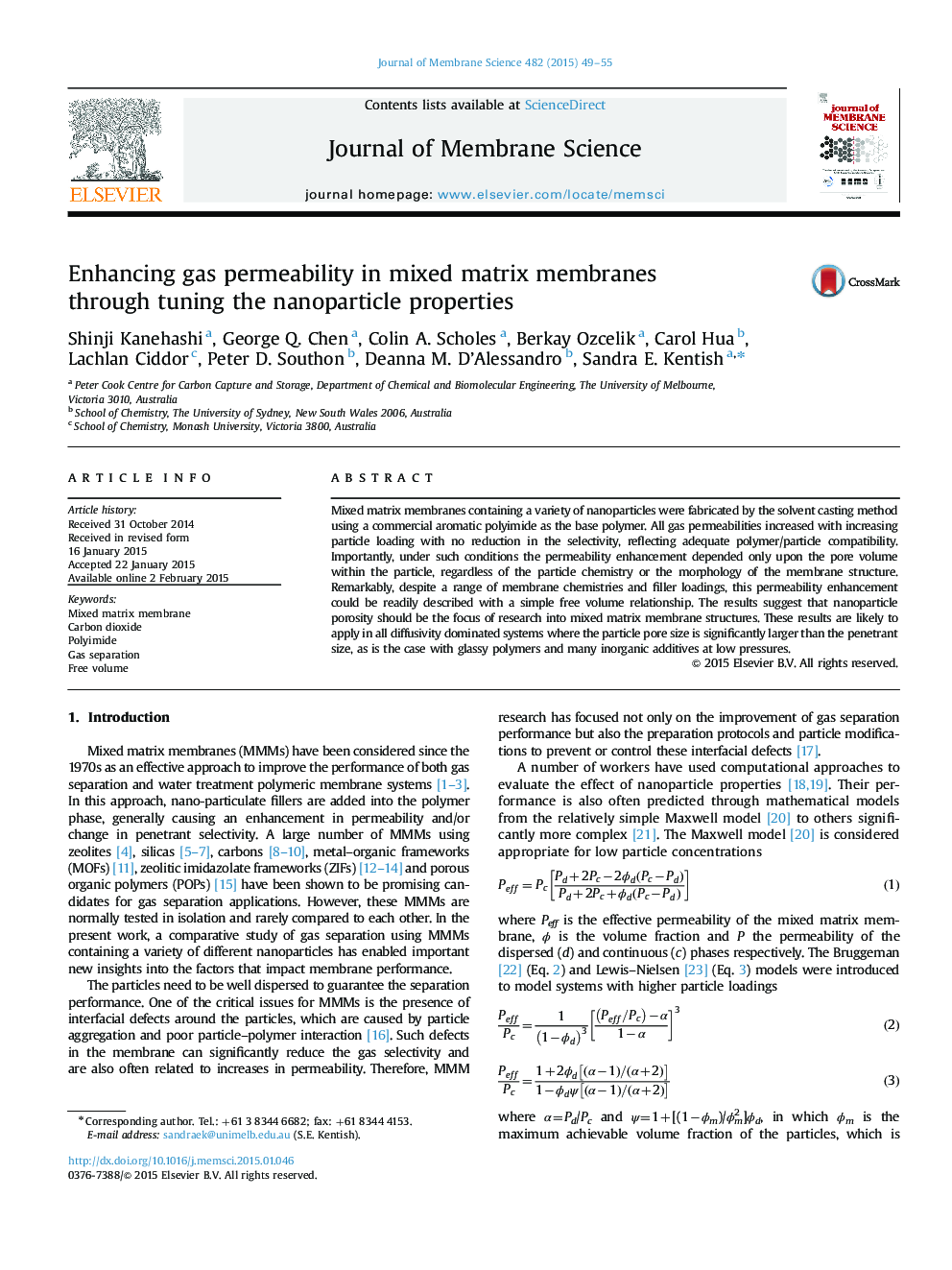| کد مقاله | کد نشریه | سال انتشار | مقاله انگلیسی | نسخه تمام متن |
|---|---|---|---|---|
| 632925 | 1456017 | 2015 | 7 صفحه PDF | دانلود رایگان |
• Dense mixed matrix membranes fabricated using Matrimid and a range of nanoparticles.
• Images of membrane morphology strongly correlated with nanoparticle hydrophobicity.
• Permeability not correlated with morphology changes.
• Permeability readily described by a simple free volume relationship.
Mixed matrix membranes containing a variety of nanoparticles were fabricated by the solvent casting method using a commercial aromatic polyimide as the base polymer. All gas permeabilities increased with increasing particle loading with no reduction in the selectivity, reflecting adequate polymer/particle compatibility. Importantly, under such conditions the permeability enhancement depended only upon the pore volume within the particle, regardless of the particle chemistry or the morphology of the membrane structure. Remarkably, despite a range of membrane chemistries and filler loadings, this permeability enhancement could be readily described with a simple free volume relationship. The results suggest that nanoparticle porosity should be the focus of research into mixed matrix membrane structures. These results are likely to apply in all diffusivity dominated systems where the particle pore size is significantly larger than the penetrant size, as is the case with glassy polymers and many inorganic additives at low pressures.
Figure optionsDownload high-quality image (139 K)Download as PowerPoint slide
Journal: Journal of Membrane Science - Volume 482, 15 May 2015, Pages 49–55
